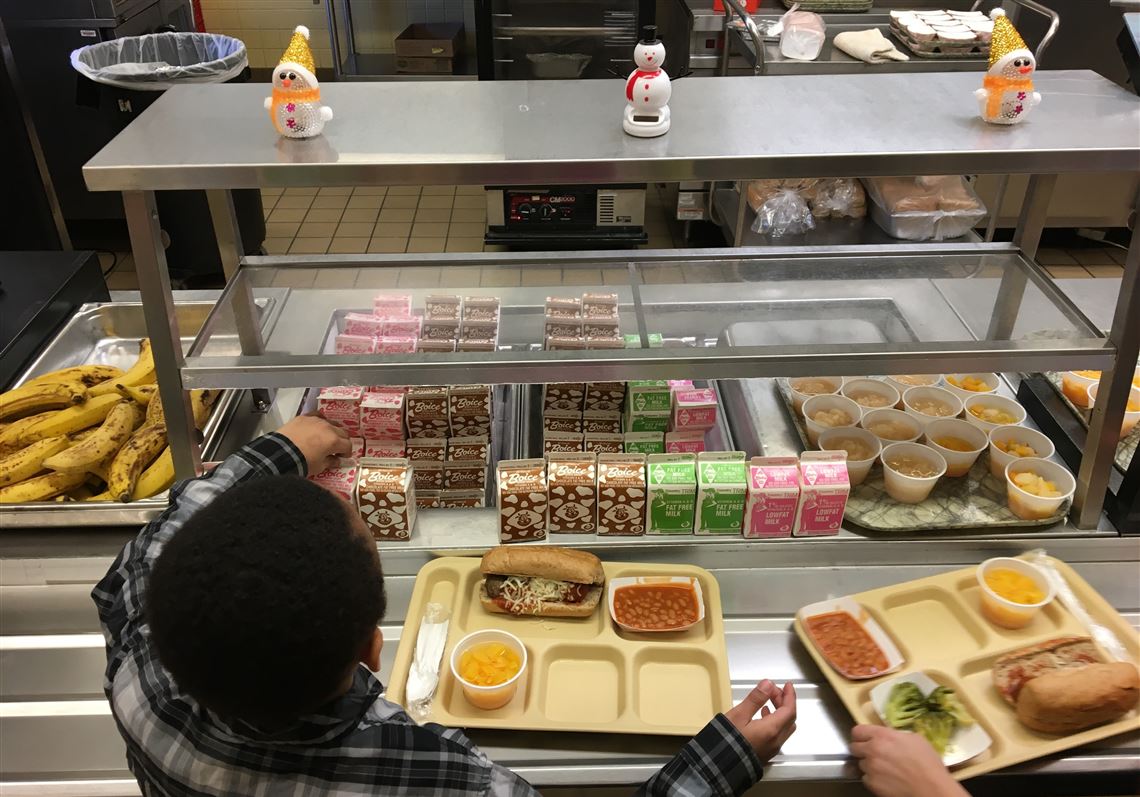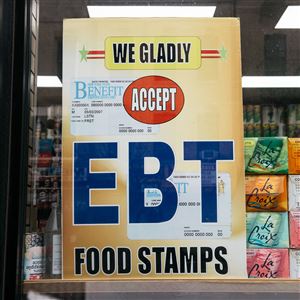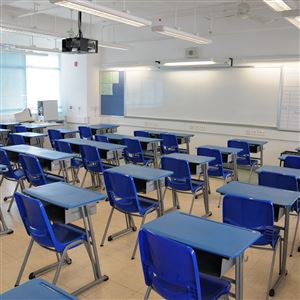Mark Cherpak only has to glance at the numbers to know that school lunch debt rose so quickly this year that it is nearly twofold what the Baldwin-Whitehall School District reported in the years before the pandemic.
The district is facing $45,000 in school lunch debt so far this year. Before the pandemic, that number typically was $50,000 for the entire year, “so we are running roughly double that now,” said Mr. Cherpak, the district’s business manager.
School lunch debt this year has been increasing for many districts nationwide, including some in the Pittsburgh area, after a pandemic-era program that provided all public school students with free breakfast and lunch ended. That means districts are back to charging students for meals.
Because of that, a recent survey from the School Nutrition Association that included input from 1,230 school meal program directors nationwide found meal debt is a significant issue this year, with one school district reporting $1.7 million in unpaid school lunch charges. The total accumulated unpaid meal debt for 847 districts exceeded $19 million.
“That impacts not only the families but also school district budgets,” Diane Pratt-Heavner, School Nutrition Association spokeswoman, said. “There have been dramatic increases in costs not only due to inflation but also because of supply chain disruptions and labor shortages, which are requiring schools to increase wages and offer hiring and retention bonuses to try and keep their school cafeterias fully staffed.”
So far this year, debt totals have outpaced those reported before COVID. Median meal debt for districts not offering free meals to students totaled $6,000 – nearly double what it was in 2017-18.
Many also fear the return of “lunch shaming” — tactics like taking away school meals or singling out children. In the years leading up to the pandemic, schools made national news for approaches to collecting unpaid bills. A child in Alabama was stamped on the arm with “I Need Lunch Money.” In one day, a Utah elementary school threw away about 40 lunches of students with unpaid bills, The New York Times reported.
In Pennsylvania, the Wyoming Valley West School District near Wilkes-Barre threatened parents with possible foster care over unpaid debt.
In 2017, Pennsylvania passed a law banning those tactics. The legislation changed several times over the years, but in 2019, schools were again permitted to give “alternative meals” to students who owe more than $50 and aren’t eligible for free or reduced lunch.
Currently, school districts set meal prices, typically with school board approval.
Those with incomes at or below 130% of the poverty level can qualify for free lunches. Additional qualifications are available for reduced lunch prices. Some school districts, such as Penn Hills, qualify for the Community Eligibility Provision, a federal program that allows districts to provide free lunches to all students.
The program implemented during the pandemic followed that model.
The program was “a game changer,” said Crystal FitzSimons, director of school and out-of-school time programs at the Food Research & Action Center, a national nonprofit that works to eradicate poverty-related hunger in the U.S. “It ensured every child had access to a nutritious meal they needed to return to class after lunch well-nourished and ready to learn.”
While the two-year program has ended, pandemic-related problems continue to plague school districts. That caused Congress this year to provide additional funding to schools to alleviate challenges. In all, legislators authorized additional reimbursements of 40 cents per lunch served and an additional 15 cents for each breakfast served. Those funds, however, expire in June.
“School districts have been struggling throughout the pandemic … so additional reimbursement has been critical,” Ms. FitzSimons said.
Additionally, Pennsylvania is providing every child with free breakfast this academic year.
“The extension of free student breakfasts across Pennsylvania has been a great benefit to students,” said Lindsay Radzvin, director of food services at North Hills School District. “This reduces the stigma and enables all students to get a healthy start to their day in school.”
District feedback
Despite those efforts, problems continue for local school districts as they transition back to charging students.
At Baldwin-Whitehall, Mr. Cherpak suggested high debt levels could stem from eligible families not applying for free and reduced lunch after not having to for the past years.
“There’s also a readjustment period for others who have got used to meals being free for the past two years,” Mr. Cherpak said.
He noted the district does not withhold lunches from students with debt, although those childrenare not allowed to purchase additional items until the debt is paid. If outstanding balances remain at the end of the school year, administrators will use the district’s general fund to cover the debt.
When North Hills students have a large debt, the district will have counselors see if those students are eligible for free meals and provide assistance in completing applications, Ms. Radzvin said. All students will receive a meal even if they owe a debt.
The district currently has $7,000 in debt, similar to numbers reported before the pandemic, Ms. Radzvin said, noting that most of that will be collected by the end of the year.
Looking forward
Given those numbers, national organizations are calling on Congress to change federal programs.
“We’re very interested in getting Congress to take another look at the importance of offering free meals to all students and will continue to send that message at the federal and state levels,” Ms. FitzSimons said.
She noted that the way school nutrition programs are structured often leads to families struggling to pay meals, and suggested that eligibility for free or reduced lunches is too low.
Stigma is also often associated with the initiatives, causing students to drop out as they get older.
“Unfortunately students do often know when mom and dad can’t afford to pay for their meals and they choose not to eat or they don’t want to be seen as a child relying on that free meal,” Ms. Pratt-Heavner of the School Nutrition Association said.
Several states including California, Maine, New York and Vermont have announced plans to extend universal free school meals. Efforts are also underway in Minnesota and other states to provide free meals for the current school year.
“I think most people don’t want to go back,” Ms. FitzSimons said. “There is a lot of energy and momentum to try to figure out a way to move in this.”
First Published: January 30, 2023, 10:00 a.m.
Updated: January 30, 2023, 12:27 p.m.



















